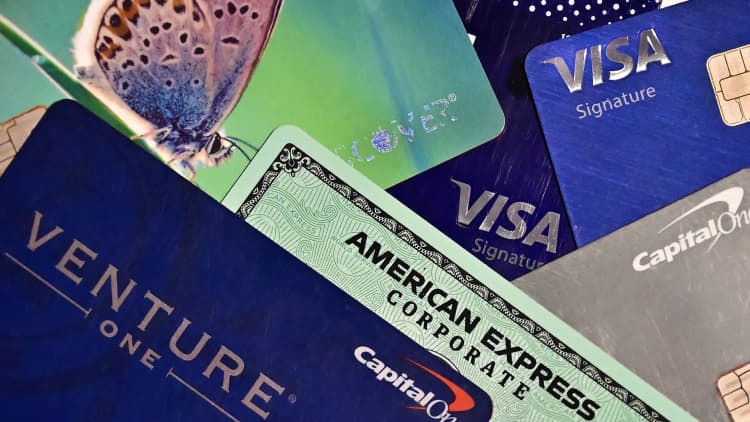
[ad_1]

Americans are increasingly leaning on their credit cards.
Altogether, card balances now total $1.08 trillion, according to the latest quarterly report from the Federal Reserve Bank of New York, a new record.
“Over the past two years, Americans’ credit card balances have skyrocketed 40%,” said Ted Rossman, senior industry analyst at Bankrate.
“While Americans are managing their credit card debt pretty well, all things considered, we are seeing pockets of trouble at the household level,” Rossman said.
More cardholders are carrying debt from month to month and fewer are able to pay off their balances in full, according to a separate report by Bankrate.com.
More from Personal Finance:
Consumers are racking up more ‘phantom debt’
Did you break your New Year’s money resolutions already?
Americans are ‘doom spending’
Nearly half, or 49%, of credit card holders carry debt from month to month on at least one card, up from 46% last year, the report found, and 56 million cardholders have been in debt for at least a year.
“The current environment is tough,” Rossman said. “Although inflation has eased, there’s a cumulative effect there.”
This may also be a consequence of “shifts in lending, overextension, or deeper economic distress associated with higher borrowing costs and price pressures,” Fed researchers noted in a blog post.
Credit card interest rates top 20%
Not only can carrying a balance lower your credit score, but sky-high annual percentage rates also make revolving debt a particularly hard cycle to break.
The average credit card rate is now more than 20%, on average — an all-time high — after rising at the steepest annual pace ever, in step with the Federal Reserve’s interest rate hike cycle.
“Most cardholders’ rates have risen five-and-a-quarter percentage points during that span as a result of the Fed’s rate hikes meant to combat inflation,” Rossman said. “It’s no wonder, then, that we’re seeing more people carrying more debt for longer periods of time.”
Even though Fed officials indicated as many as three cuts coming this year, credit card APRs aren’t likely to improve much.
“I don’t think that’s going to bring a lot of relief,” Rossman added.
The math is ‘brutal’
At 20.74%, if you made minimum payments toward the average credit card balance — which is $6,088, according to Transunion — it would take you more than 17 years to pay off the debt and cost you more than $9,072 in interest, Bankrate calculated.
“The minimum payment math is just brutal,” Rossman said.
The first thing you should do is acknowledge what you owe and the interest rate, he advised. Then, start to pay down the debt with a 0% balance transfer card.
Cards offering up to 21 months with no interest on transferred balances “are still widely available,” he added. If you can take advantage of that type of promotion on the same average balance and make 21 equal payments of just under $300, “you are out of debt in less than two years,” Rossman said.
Making the best use of a balance transfer boils down to making those payments on time and aggressively paying down the balance during the introductory period.
If you don’t pay the balance off, the remaining balance will have a higher APR applied to it, which is generally about 23%, on average, in line with the rates for new credit.
Don’t miss these stories from CNBC PRO:
[ad_2]
Source link
